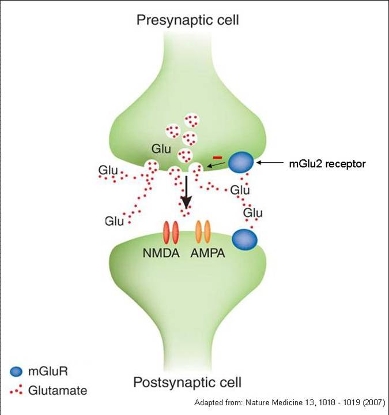Research project
Kinetic profiling of positive allosteric modulators of the mGlu2 receptor
Supervisor: Maarten Doornbos
- Contact
- Laura Heitman

In an ideal world the development of new medicines would be quick and easy, resulting in safe products for patients. In our world this is, unfortunately, not the case. During the development process a lot of potential medicines are withdrawn as they are unsafe or lack efficacy. The translational step between in vitro and in vivo experiments, is not as predictive as one would desire. Lots of promising compounds fail in the in vivo experiments, thereby spilling lab animals, time and money.
Glutamate is one of the most important neurotransmitters in the central nervous system (CNS). An abnormal glutamatergic neurotransmission is found to be involved in various CNS diseases, such as schizophrenia and Parkinson’s disease. Activation of the mGlu2 receptor, a class C GPCR, induces an inhibition of glutamate release into the synapse.
Ideally, in the treatment of CNS diseases, the level of glutamate is lowered to a ‘normal’ level through the use of agonists. However, the development of selective mGlu2 agonists is hard due to the conserved glutamate binding site between different mGlu receptors.
Therefore, drug discovery has shifted to the development of positive allosteric modulators (PAMs), which bind at a distinct binding pocket. Hundreds of high affinity mGlu2 PAMs, based on various chemical scaffolds, have been described so far. Unfortunately, only a few have made it into the clinical phase and none of them are available on the market so far. This is partly caused by an unpredictable in vivo efficacy. For that reason Janssen Pharmaceutica (Beerse, Belgium) decided to collaborate with our division in order to evaluate the potential of kinetic profiling of their established mGlu2 PAM library for retrospective prediction of in vivo efficacy.
By joining this project you will be involved in determining the kinetic profile of mGlu2 PAMs. We try to determine this kinetic profile by using various techniques such as (kinetic) radioligand binding assays and label free screening using xCELLigence technology. Cell culturing will also be part of the project, as the experiments are performed either on whole cells or cell membrane preparations.
Techniques:
- Cell culture
- Radioligand binding assays
- Label free screening assays
